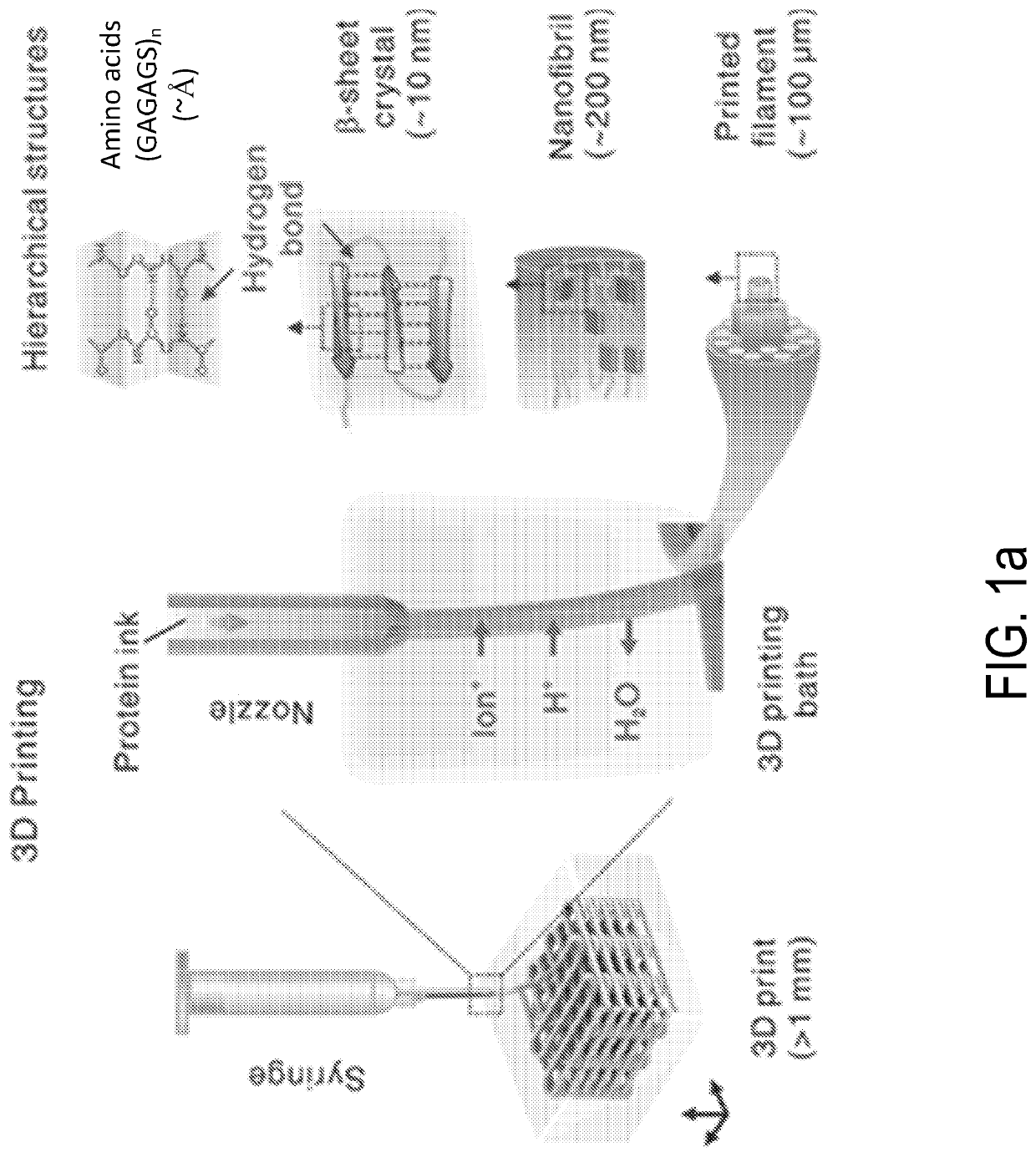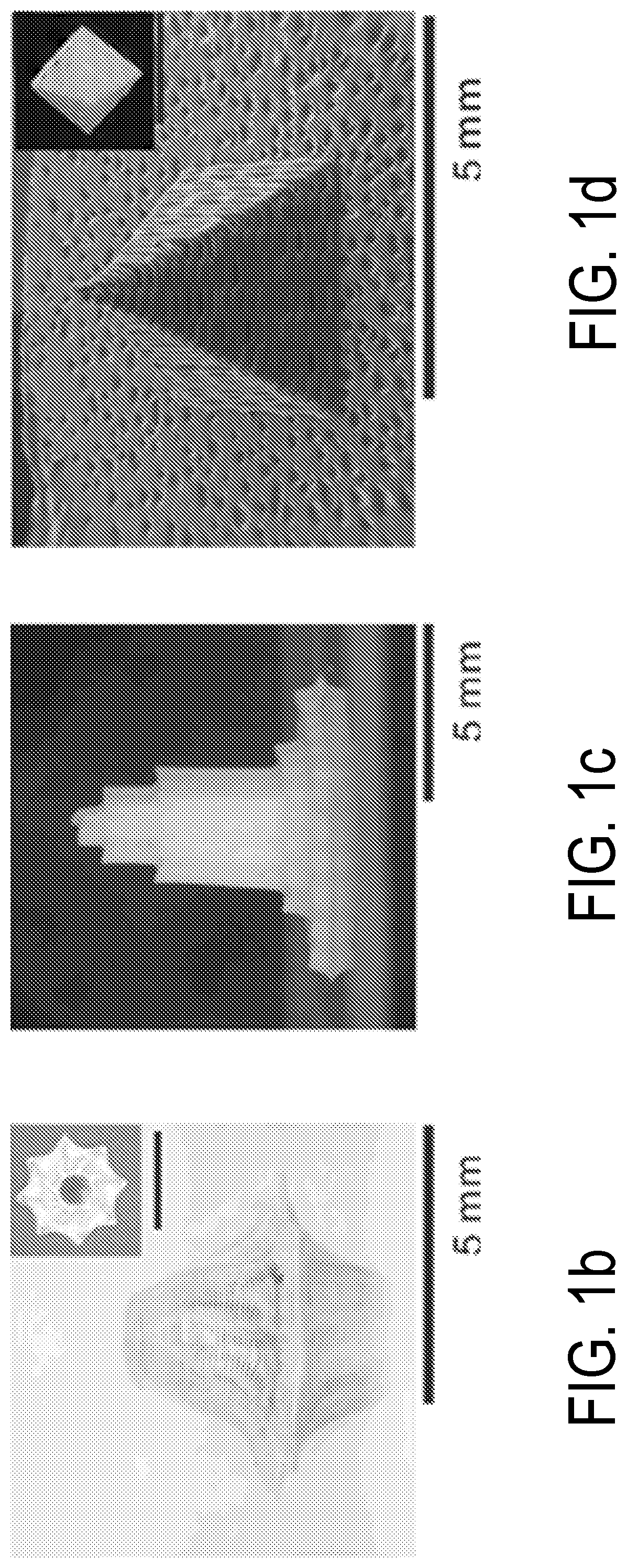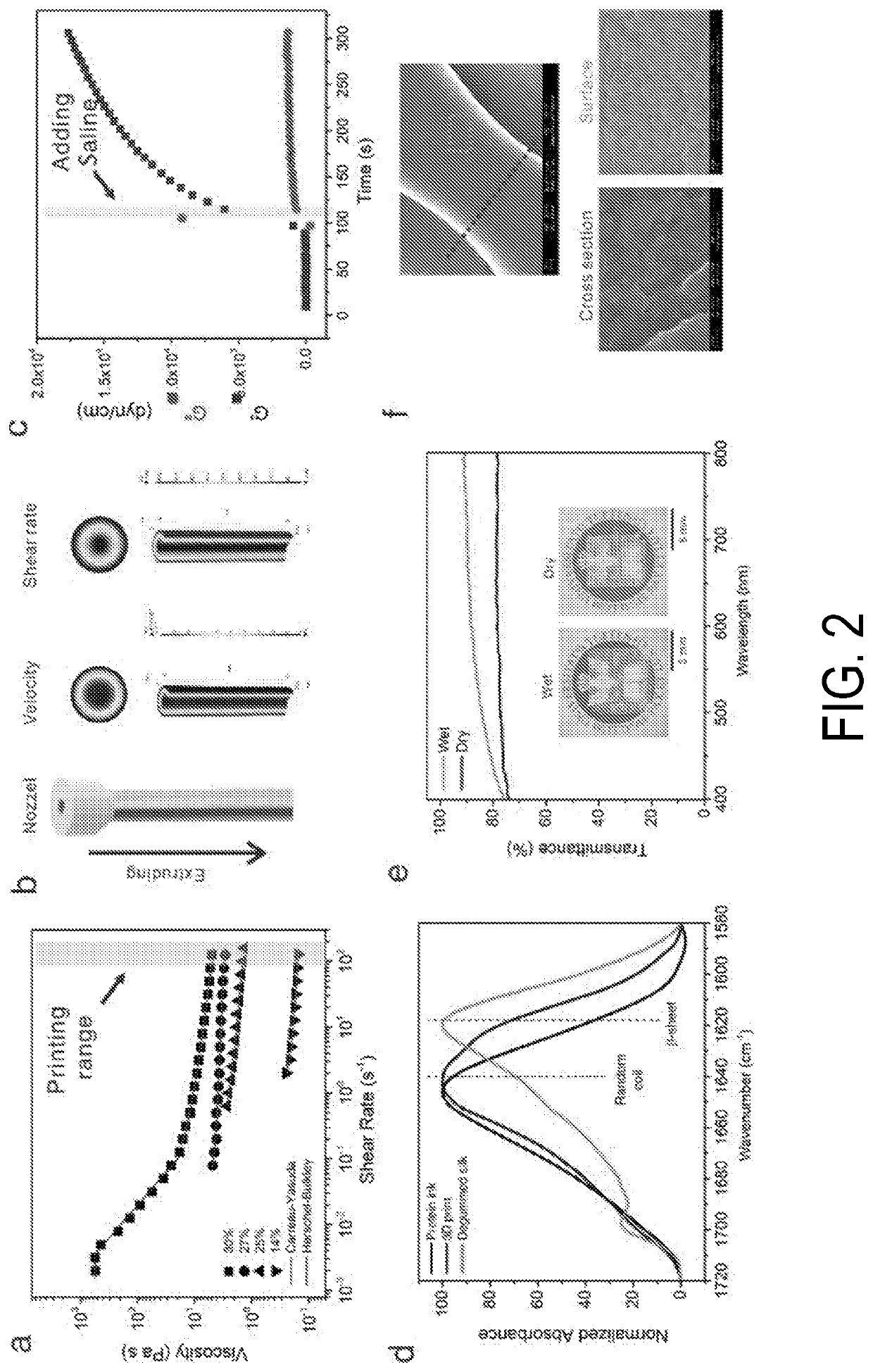Systems and methods for 3D printing of proteins
a technology of proteins and systems, applied in the field of systems and methods for 3d printing of proteins, can solve the problems of limited shape complexity, deterioration of strength, and compromise of biocompatibility, so as to reduce costs, reduce the biocompatibility and degradability of printed structures, and eliminate additives and process steps
- Summary
- Abstract
- Description
- Claims
- Application Information
AI Technical Summary
Benefits of technology
Problems solved by technology
Method used
Image
Examples
example 1
[0064]Preparation of Protein Ink and 3D Printing Procedure
[0065]The protein ink was prepared using 5 g of sliced cocoons from Bombyx mori (Tajima Shoji Co., Yokohama, Japan) were degummed in 2 L boiling solution of 0.02 M sodium carbonate for 30 min. The degummed fibers were dried overnight and solubilized in 9.3 M lithium bromide for 4 h in a 60° C. oven, followed by a dialysis (MWCO, 3,500) against DI water with 6 changes over 3 days. The insoluble particulates were removed by centrifugation (two times at 9,000 rpm, 20 min, 4° C.) and syringe filtration (low protein binding PVDF membrane, 5 μm, Merck Millipore, Ireland). The filtered solution was loaded into Slide-a-Lyzer dialysis cassettes (MWCO 3,500, Pierce) and concentrated by drying under 4° C. for 8 days to obtain high concentrations from 14 wt % to 30 wt %. Silk concentration was determined by weighing a dried sample of a known volume. The ink was doped with HRP, ampicillin or nanomaterials (Quantum dots and gold nanorods (...
example 2
[0078]Preparation of Protein Ink and 3D Printing Procedure
[0079]The protein ink was prepared using 5 g of sliced cocoons from Bombyx mori (Tajima Shoji Co., Yokohama, Japan) were degummed in 2 L boiling solution of 0.02 M sodium carbonate for 30 min. The degummed fibers were dried overnight and solubilized in 9.3 M lithium bromide for 4 h in a 60° C. oven, followed by a dialysis (MWCO, 3,500) against DI water with 6 changes over 3 days. The insoluble particulates were removed by centrifugation (two times at 9,000 rpm, 20 min, 4° C.) and syringe filtration (low protein binding PVDF membrane, 5 μm, Merck Millipore, Ireland). The filtered solution was loaded into Slide-a-Lyzer dialysis cassettes (MWCO 3,500, Pierce) and concentrated by drying under 4° C. for around 8 days to obtain high concentrations around 30 wt %. Silk concentration was determined by weighing a dried sample of a known volume. The ink was doped with horseradish peroxidase (HRP)-, labeled antibody (A0293, Sigma-Aldric...
PUM
| Property | Measurement | Unit |
|---|---|---|
| soak time | aaaaa | aaaaa |
| soak time | aaaaa | aaaaa |
| inner diameter | aaaaa | aaaaa |
Abstract
Description
Claims
Application Information
 Login to View More
Login to View More - R&D
- Intellectual Property
- Life Sciences
- Materials
- Tech Scout
- Unparalleled Data Quality
- Higher Quality Content
- 60% Fewer Hallucinations
Browse by: Latest US Patents, China's latest patents, Technical Efficacy Thesaurus, Application Domain, Technology Topic, Popular Technical Reports.
© 2025 PatSnap. All rights reserved.Legal|Privacy policy|Modern Slavery Act Transparency Statement|Sitemap|About US| Contact US: help@patsnap.com



